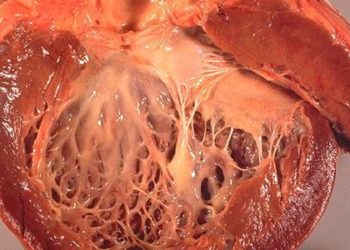Stereotactic body radiotherapy is noninferior to hypofractionated radiotherapy for localized prostate cancer
1. In this randomized controlled trial, among patients with localized prostate cancer, five-fraction stereotactic body radiotherapy (SBRT) was found to be noninferior to conventionally or moderately hypofractionated radiotherapy for biochemical or clinical failure.
2. Five-fraction SBRT resulted in a higher incidence of genitourinary side effects compared with conventionally or moderately hypofractionated radiotherapy, while the incidence of gastrointestinal side effects was similar between the two groups.
Evidence Rating Level: 1 (Excellent)
Study Rundown: Nearly 1.5 million men are diagnosed with prostate cancer annually, with a significant proportion of these patients having low- or intermediate-risk disease for which radiotherapy is a curative treatment option. Recent innovations in image guidance and radiotherapy delivery have improved treatment outcomes while reducing side effects; hypofractionation, which involves delivering higher doses per treatment session, is one of these innovations and has the advantage of maintaining treatment efficacy while reducing the total number of treatment sessions, decreasing the burden of radiotherapy for both patients and health care systems. SBRT further builds on these developments, allowing ultra-hypofractionated radiotherapy to be precisely delivered. The present trial compared the effects of five-fraction SBRT with those of conventionally or moderately hypofractionated radiotherapy on the incidence of freedom from biochemical or clinical failure and side effects among patients with localized prostate cancer. SBRT was shown to be noninferior to conventionally or moderately hypofractionated radiotherapy for biochemical or clinical failure. Additionally, the incidence of gastrointestinal side effects was similar between the two treatment groups, although SBRT resulted in a higher incidence of genitourinary side effects. The study was limited by its sample population; 87% of the patients in the trial were White. Additionally, the trial only enrolled patients with low- or intermediate-risk prostate cancer, and the results may not apply to patients with higher-risk disease. Nevertheless, these findings provide novel insights regarding the efficacy of SBRT in treating localized prostate cancer.
Click to read the study in NEJM
In-Depth [randomized controlled trial]: This phase three noninferiority trial compared the effects of five-fraction SBRT with those of conventionally or moderately hypofractionated radiotherapy on the incidence of freedom from biochemical or clinical failure and side effects among patients with localized prostate cancer. Patients 18 years of age or older with histologically confirmed prostate adenocarcinoma classified as low- or intermediate-risk according to National Comprehensive Cancer Network criteria, a World Health Organization performance-status score of zero to two, and a life expectancy of over 5 years were included. The primary outcome was freedom from biochemical or clinical failure, with biochemical failure defined by increases in PSA levels, initiation of androgen deprivation therapy, or orchidectomy, and clinical failure defined as local recurrence, nodal recurrence, distant metastases, or death from prostate cancer. A total of 838 patients participated in the trial, with 414 in the SBRT group and 424 in the control radiotherapy group. The five-year incidence of freedom from biochemical or clinical failure was 95.8% in the SBRT group (95% Confidence Interval [CI], 93.3 to 97.4) compared with 94.6% in the control radiotherapy group (95% CI, 91.9 to 96.4). As such, SBRT was noninferior to control radiotherapy, with a hazard ratio of 0.73 (90% CI, 0.48 to 1.12; p=0.004 for noninferiority). Concerning side effects, the cumulative incidence of RTOG grade two or higher genitourinary events up to five years post-treatment was 26.9% in the SBRT group compared with 18.3% in the control radiotherapy group (hazard ratio, 1.59; 95% CI, 1.18 to 2.12). In summary, five-fraction SBRT was shown to be noninferior to conventionally or moderately hypofractionated radiotherapy with respect to biochemical or clinical failure.
Image: PD
©2024 2 Minute Medicine, Inc. All rights reserved. No works may be reproduced without expressed written consent from 2 Minute Medicine, Inc. Inquire about licensing here. No article should be construed as medical advice and is not intended as such by the authors or by 2 Minute Medicine, Inc.









